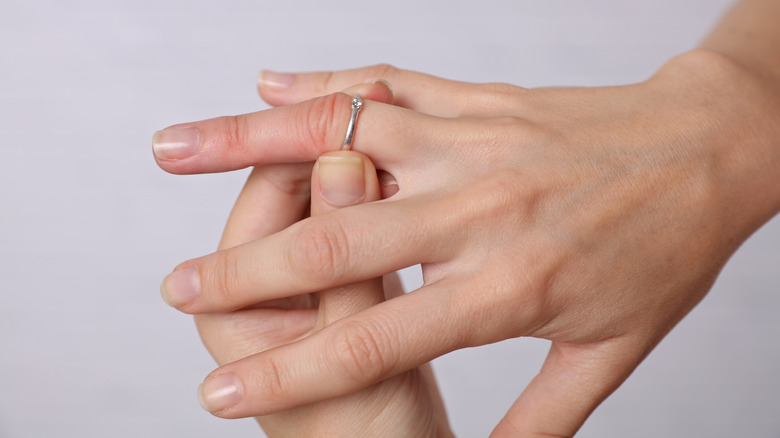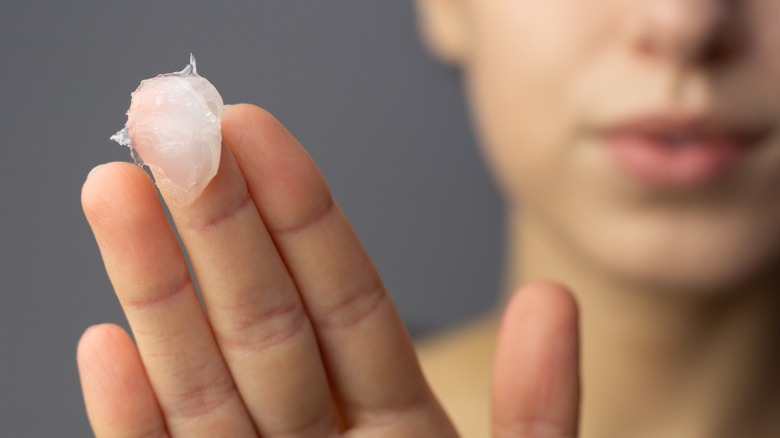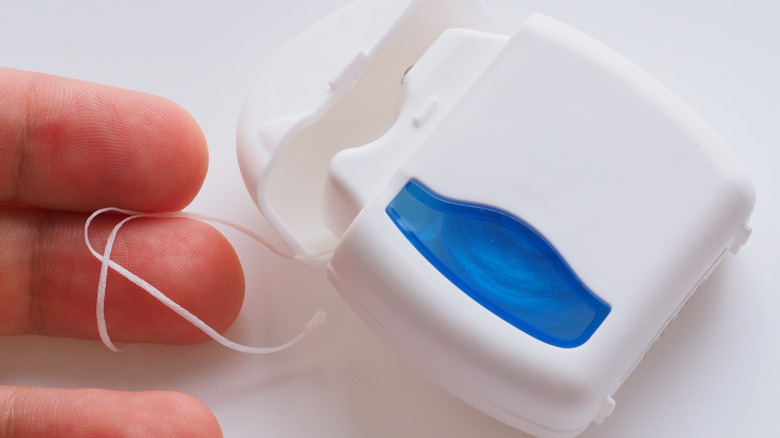Ring Stuck On Your Finger? Try These Tips To Remove It
From promise rings to engagement rings to coronation rings — this type really only applies to the likes of Queen Elizabeth — rings are prized for their sentimental and symbolic value. Wedding rings, for example, were popularized thousands of years ago by the ancient Egyptians, who, like many cultures today, wore their bands around the fourth finger of their left hand (via Vanity Fair). It was a common belief that a vein connected the heart and ring finger, and the ring represented forever love. It wasn't until the mid-20th century marketing campaign that diamonds became the go-to gemstone for engagements.
Today, rings are an equal part fashion statement and equal part sentimentality. Channel shows like "Daisy Jones & The Six," and master the art of '70s nostalgia, expertly stacking your ring collection. Because they're so common across the board, even toe rings were a short-lived Y2K phenomenon, it's more than likely you'll experience the panic of getting a ring stuck on your finger at some point in your lifetime. When this (inevitably) happens, follow these steps to slide it off before heading to the emergency room.
Reduce friction with the help of a lubricant
Hot day? You may notice your fingers swelling. Depending on the temperature, pregnancy, a change in weight, or even bone growth, fingers can fluctuate in size. Whereas our bodies adapt to reflect our environments, a ring's diameter remains constant. As Lewis Nelson, MD explains to Health, "As the finger swells, the ring becomes a restrictive band," adding, "[the ring] can cut off blood supply to the finger." When your finger is cut off from blood for too long, a simple mishap can become dangerous.
Fortunately, there are plenty of at-home solutions for wedged rings. Start by finding a lubricant, like a hand lotion, Vaseline, or olive oil, and apply a small amount to your ring finger. Keep in mind that slathering on too much will make it hard to grip the ring with your free hand. Believe it or not, in these cases, Windex is the perfect solution (via Athletico). It will reduce friction between the skin and metal, but it won't make the surface of the ring too slippery. It may also help to raise your hand or run it under cold water, encouraging the swelling to go down before you start.
Ask a friend for help
If using Windex or lotion proves ineffective, it may be time to seek a helping hand (literally). Have a friend or family member thread a string or a long strand of dental floss underneath the band. If it's too tight, use an open safety pin to persuade it through. Next, loop the floss securely around your finger above the ring, taping down the end just after your PIP joint, or the knob halfway up your finger. Finally, as the YouTube channel Simple & Fast demonstrates for followers, unwrap the floss starting at the base below the ring — your band should slowly slide up your finger as you go.
Sometimes, even this method won't be enough. Therefore, recruit a friend to pull the ring off your finger in a circular, unscrewing motion while simultaneously stretching down your skin — it may pinch a little. Again, cold water and lubricant can help in this process. Finally, if no progress has been made and the tip of your finger is beginning to change color from poor circulation, it may be time to consult a professional. Your closest emergency room, the local jeweler, and maybe even the fire department should have a tool designed to cut through metal rings. The bottom line? When picking out an engagement ring, factoring in your band size is just as important as considering the many types of diamond cuts.


